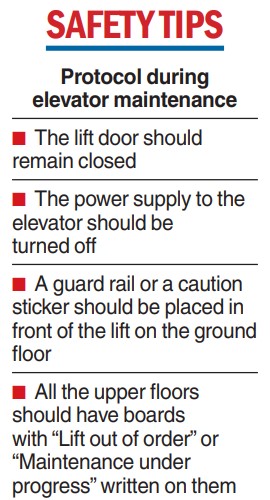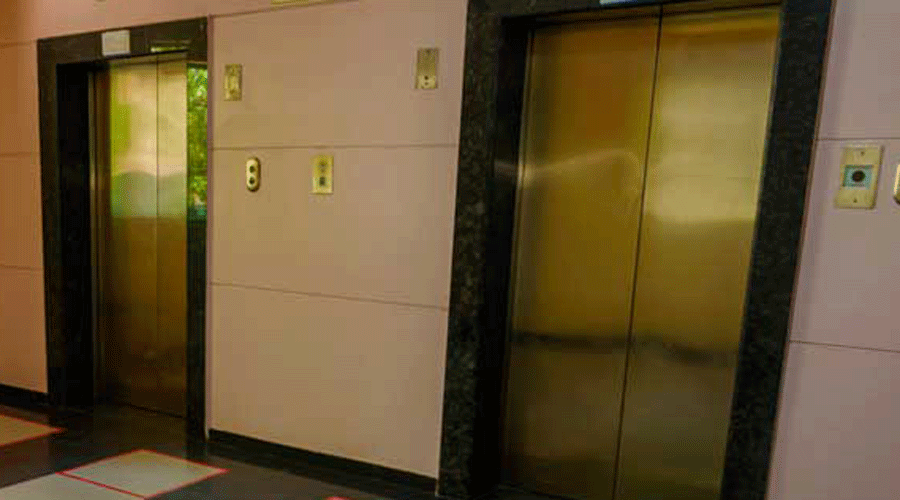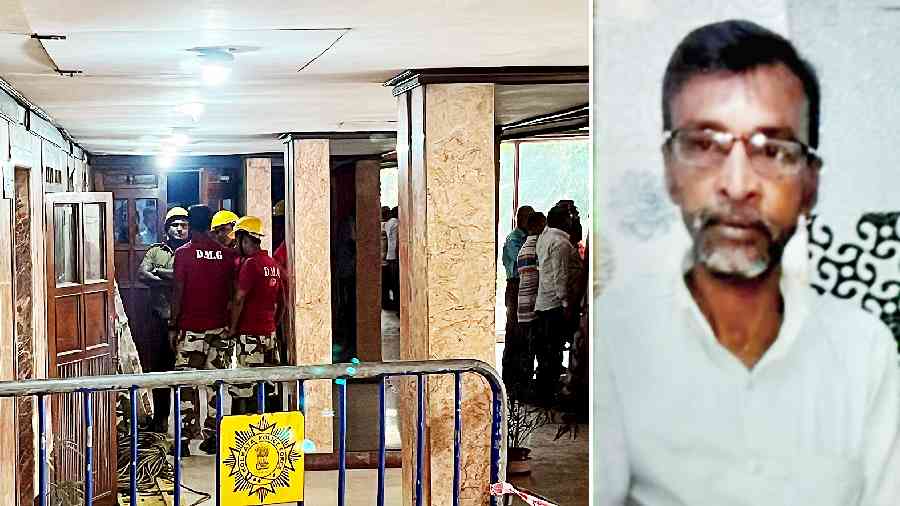Several things might have gone wrong together during the maintenance of an elevator in a 16-storey building on Jawaharlal Nehru Road in the heart of Kolkata that resulted in the death of a liftman on Wednesday, police said.
A preliminary inquiry has revealed that a mechanical fault in the elevator triggered the downward motion that crushed Abdul Rahim, the liftman, who had fallen into the shaft. However, had the gate of the lift car been closed, Rahim would not have got a chance to enter the elevator in the first place.
“During any type of maintenance work, the gate of the elevator should be closed so that no one can enter,” said an officer of Shakespeare Sarani police station.
Allegations have surfaced that there was no one in front of the elevator on the ground floor on behalf of the lift maintenance team who couldhave alerted the liftman that getting inside could be dangerous.
The police had not received a formal complaint from Rahim’s family till Thursday evening.
“We have received a letter from the wife of Abdul Rahim, who has mentioned that she did not want to lodge any complaint against anyone,” said an officer.
Rahim, 57, who had been working as a liftman at Om Towers on Jawaharlal Nehru Road for several years,was on duty at lift number three whose operation was stopped on Wednesday for maintenance work.

At least two other elevators were operational at the time in the 16-storey building.
The police said elevator 3 was on the ground floor, with its gate open, when one of its cables was being repaired on an upper floor.
“Rahim had stepped inside the open lift to take out a stool when suddenly the lift was pulled up. He apparently lost balance. A part of his body was outside the elevator. Rahim tried to come out but fell into the lift shaft as the elevator moved up. But before he could come out, the lift came crashing down on him,” said an officer.
“Ideally, when an elevator is turned non-operational for maintenance, a board mentioning ‘Maintenance Work in Progress’ or ‘Lift Out of Order’ should be hung outside the elevator on every level,” said the officer.
An official at a lift manufacturing company said all elevators are fixed with an “over-speed governor”, which brings the elevator to a halt the moment the speed crosses alimit.
“The over-speed governor never allows that (the uncontrolled downward motion of the elevator that killed the liftman) to happen unless there is a malfunction in the device,” the official said.
Many who work in the offices inside Om Towers have alleged that the elevators of the building that catered to people visiting more than 50 offices were “not in good shape”.
“Every second day, there was a problem with elevators. The lifts are old and the maintenance is poor,” an office-goer complained after the accident was reported.
Many high-rise buildings — commercial and residential — have old elevators that are prone to snags.
Residents do not complain as long as the lifts are working.
In many such places, stickers and tapes are not put up to warn users about the work in progress.
“If the display board is off, residents have to assume that work is in progress,” said a south Kolkata resident.
Most residents are unaware of the standard operating procedure.
The bigger complexes with more efficient communication systems, including WhatsApp groups, alert residents about work schedules in advance. Most smaller complexes or standalone buildings do not have such a system.

